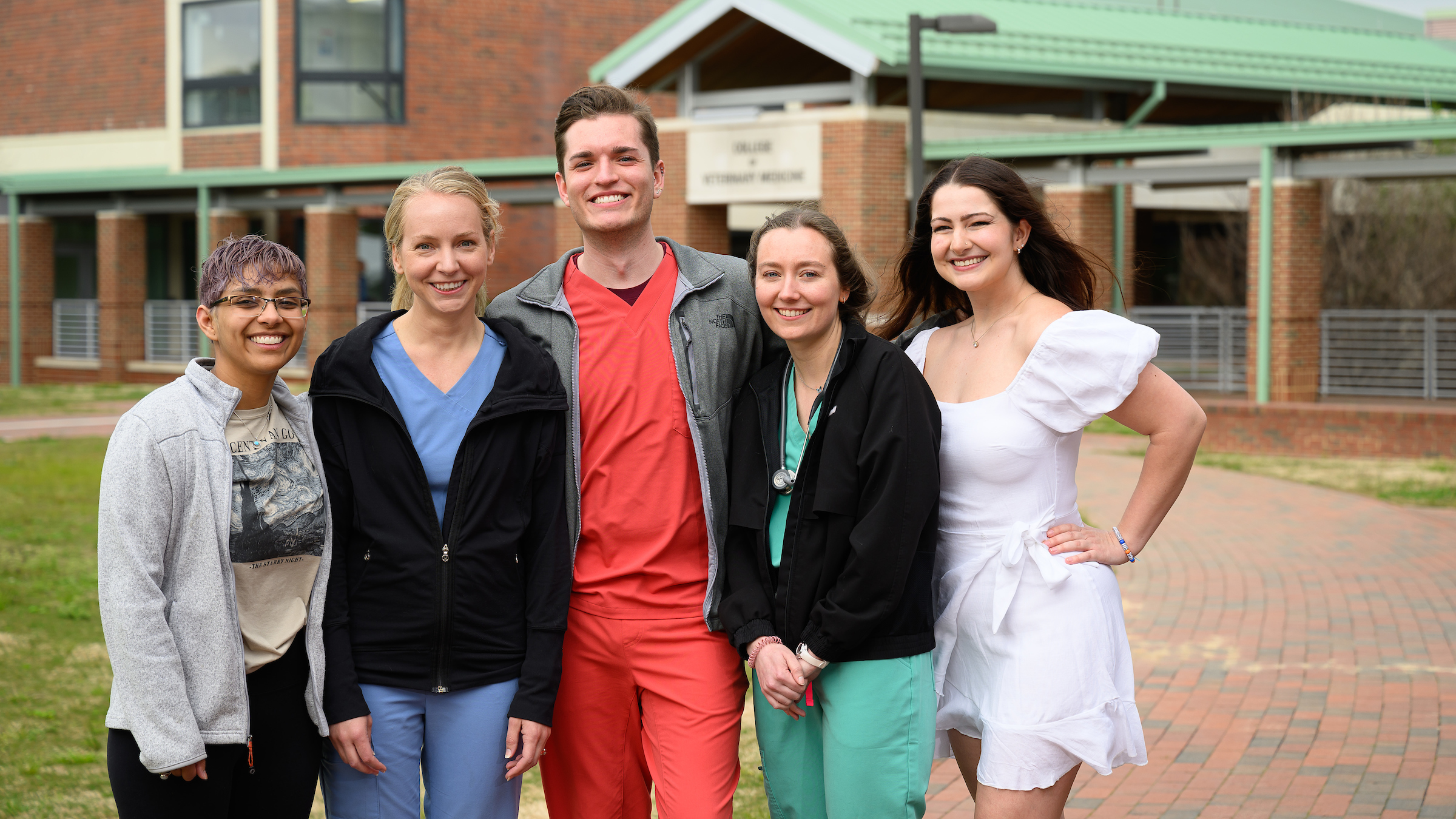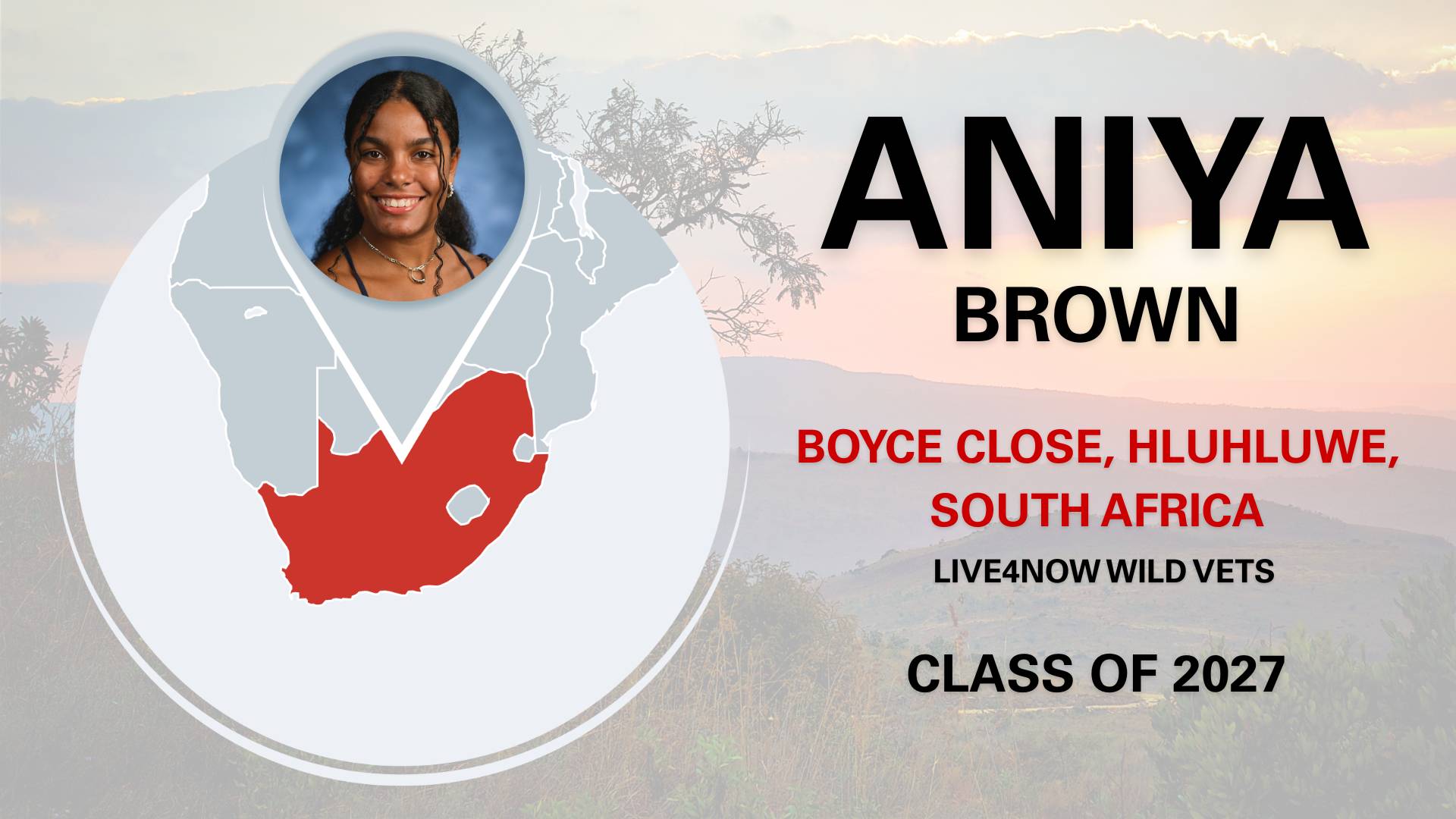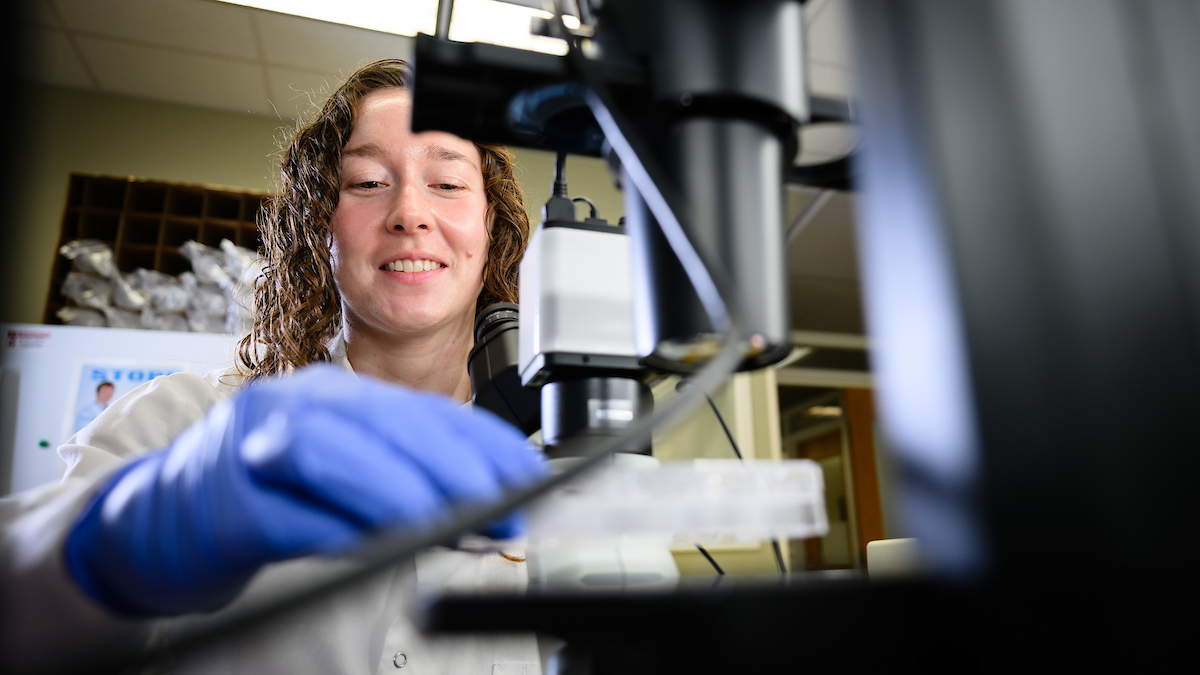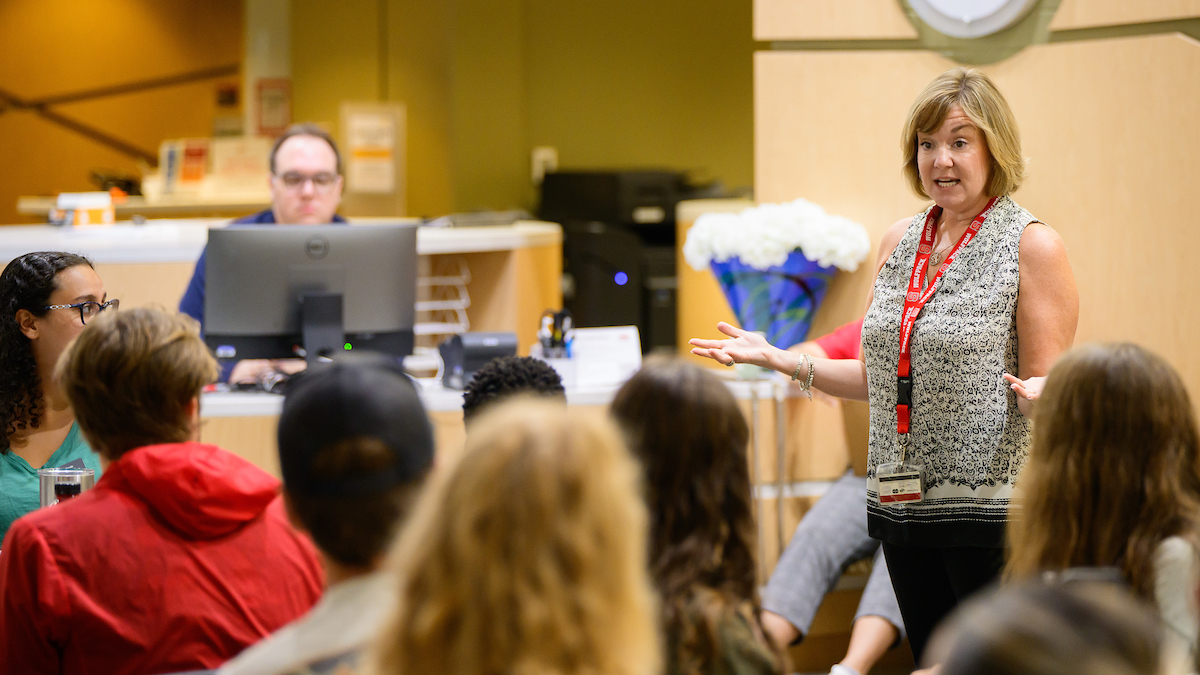Classmates for 4 Years, ‘Colleagues for Life’: NC State Pathology Class of 2024 Students Celebrate Residency Placements
All five graduating DVM students in the College of Veterinary Medicine’s pathology focus area who applied to residencies matched, an impressive feat within a small and competitive specialization.

Five students from the NC State College of Veterinary Medicine’s Class of 2024 are headed for pathology residencies after graduation, a notably high number for a small and often unsung specialization within veterinary medicine.
Every graduating NC State student who applied to a pathology residency program was admitted, says fourth-year William Benedict, who matched into a combined clinical pathology residency and Ph.D. program at Colorado State University.
“Pathology residencies can be quite difficult to get into due to the limited availability of spots that are offered per institution,” Benedict says. “This is an exceptional feat.”
The future residents are joining programs in anatomical, clinical and zoological pathology across the United States. Their residencies last three to four years on average, during which the students will receive advanced training in the diagnosis and monitoring of diseases by examining animal cells, tissues and fluid samples.
In addition to Benedict, the other students are Emma Ferraro, who matched into a zoological anatomic pathology residency run by the University of Illinois and the Brookfield Zoo; Erica Ramaker-Erlandson, who is establishing a digital and comparative pathology fellowship at the University of North Carolina at Chapel Hill; and Stephanie Anderson and Elizabeth Browder, who are heading into anatomic and clinical pathology residencies, respectively, at the University of Missouri.
Dr. Abigail Armwood, an assistant clinical professor who advises NC State’s pathology focus area and co-coordinates its anatomic pathology residency program with Dr. Elizabeth Rose, says the students have impressive qualifications. These include nine publications in peer-reviewed journals, four of which are first-author papers, and 10 poster presentations at the American College of Veterinary Pathologists’ national conference.
“I’m very impressed by these students’ accomplishments,” she says. “They’ve taken advantage of a lot of different opportunities to learn more about pathology and become more involved in the field. It’s been incredibly exciting to mentor them and see them grow into graduates heading into residencies.”
These pathologists-in-training say College of Veterinary Medicine professors like Armwood encouraged their interests in pathology and helped them use the college’s resources to immerse themselves in the field.
“When I took the clinical pathology course my second year, I completely fell in love with it,” Browder says. “I’ve always been into Nancy Drew and mystery novels, and I thought clinical pathology was like solving tiny mysteries that were really complex and different for every patient. Taking the advanced clinical pathology selective later on really cemented my interest in and love for it.”

Their journeys weren’t always smooth. The cohort started veterinary school at the height of the COVID-19 pandemic, when large classes and hospital rounds were held virtually. For some, their first hands-on pathology experience involved socially distanced, limited-space shifts in the Veterinary Hospital’s histology lab and necropsy floor.
The group grew closer as the college returned to regular operations, leaning on one another through intense courses, sharing interesting cases from their student-worker positions in the Veterinary Hospital’s pathology labs and bonding in clubs like PathHeads — communally “speaking the pathology language,” as Benedict puts it.
Their conversations covered everything from recommending externship and research experiences to discussing how to boost residency applications. The students often consulted NC State pathology residents and faculty on the different opportunities available to them.
“I used vet school to feel out the different big avenues of pathology careers, namely diagnostics, academia and industry,” Ramaker-Erlandson says. “Dr. Danielle Meritet was instrumental in helping me understand what those fields look like, and I’m incredibly grateful for the opportunities that the CVM has been able to provide for me.”
In particular, the students recognized assistant clinical professor Meritet, Armwood, associate clinical professor Devorah Stowe, clinical veterinarian Dr. Brigid Troan and assistant professor Dr. Erika Gruber as instrumental in guiding them through courses, labs and research opportunities including the Veterinary Scholars Program.
The classmates’ bond strengthened over the past year with the challenges and excitement of completing clinical rotations and submitting residency applications, Ferraro says.
When universities began extending residency offers in October, around the time the group attended the American College of Veterinary Pathologists’ annual conference together, every match prompted mutual celebration.
“I was ecstatic,” Anderson says. “I felt like I finally did it, after all that hard and extra work I put in to try to stand out for these programs finally paid off. And it was just so exciting to see that all my friends had also gotten offers. I was really proud of everybody.”
And now these friends share the anticipation of their next steps. As they tackle the logistics of cross-country moves and prepare to scatter the nation after the Oath and Hooding ceremony this weekend, they say one thing is for certain: They’ll stay in touch.
Anderson and Browder hope to explore Columbia, Missouri, together and look forward to sharing an office at the university. Ferraro says the larger group has arranged future virtual studying sessions for their board certification exams, and she plans to visit Benedict as soon as he’s settled.
“He was showing me his new place in Colorado, and I already marked off the loft as my bedroom for when I’m there,” Ferraro says.
Pathology is a small world, and these graduates’ career paths will cross again even as their routes diverge.
“We’ve had each other through vet school, and we’ll have each other as we go through residency with the ups and downs there,” Ramaker-Erlandson says. “And we’ll be colleagues for life, so it’ll be cool to run into each other at conferences and keep in touch.”
- Categories:


